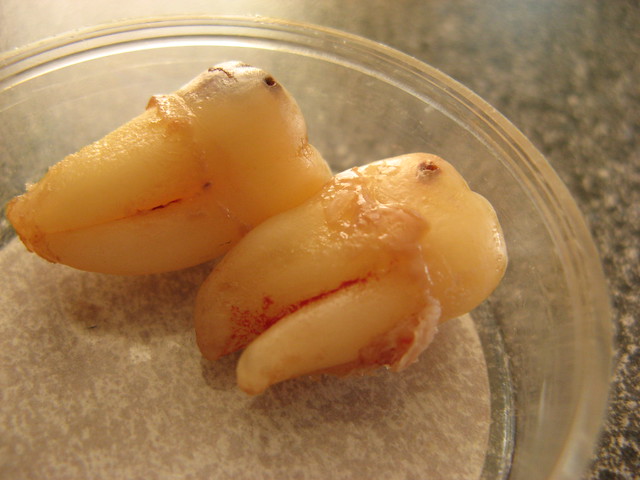An interesting article titled “Development of a New Index to Assess the Difficulty Level of Surgical Removal of Impacted Mandibular Third Molars in an Asian Population,” written by Zhang et al. appears in the 2019 edition of the Journal of Oral and Maxillofacial Surgery. The article discusses development of an index to determine the surgical difficulty of impacted lower wisdom teeth.
The authors discuss how historically the Pell and Gregory classification and the Winter classification provide a simple judgment on the difficulty level of tooth extraction. They also discuss the Pederson scoring system which assesses the difficulty of extracting impacted wisdom teeth using three factors using the position of the wisdom tooth, the relative depth, and the relation with the ramus. The Pederson scoring system calculates a score from 3 to 10 based on these three factors and then assigns the difficulty into one of three classes: 1) routine, 2) moderate, and 3) difficult. The authors say that all of these classification and scoring systems have limitations and the Pederson index is not reliable. The authors thus set out to develop a new index to assess surgical difficulty of wisdom teeth that is evidence-based.

For developing the index the authors extracted impacted lower wisdom teeth in 203 patients who presented in Beijing, China between January 2016 through December 2017. Prior to surgery the patients all had panoramic orthopantomographs taken and were all assigned to the same surgeon to perform the extractions. The authors utilized six factors in a regression model, in order of highest correlation coefficient to the lowest, including: degree of bone impaction, shape of roots, impaction angle, relation to the inferior alveolar canal, number of roots, and age. The index the authors developed goes as follows, 1) determine the degree of bone impaction as a) none (assign a score of 0), or b) partial (assign a score of 2) or c) full (assign a score of 3), 2) determine the shape of roots as a) normal (assign a score of 0), or b) swollen (assign a score of 1), or c) crooked (assign a score of 2), 3) determine impaction angle as a) less than 30 degrees (assign a score of 0) or b) greater or equal to 30 degrees (assign a score of 1), 4) determine the relation to the inferior alveolar canal as a) none (assign a score of 0), or b) touching (assign a score of 0.5) or c) as crossing (assign a score of 1), 5) determine the number of roots as a) 1 (assign a score of 0) or b) greater or equal to 2 (assign as score of 1), 6) determine age as a) less than or equal to 25 (assign a score of 0), or b) between greater than 25 and less than 35 (assign as score of 1) or c) greater than or equal to 35 (assign a score of 2). The scores from each of the six categories are then summed up and if this score falls a) between 0 and 5.4 then low difficulty is assigned, or b) between 5.5 and 7.4 then medium difficulty is assigned or c) between 7.5 and 10 then high difficulty is assigned. The authors calculated both the Pederson index and their index for each of the 203 patients. It was found using the Pederson index that 75, 76, and 52 patients were classified as having low, moderate, and high difficulty levels, while using their new index 78, 85, and 40 patients were classified as having low, moderate, and high difficulty levels. The authors state
“The proposed index could be suitable for predicting the difficulty level of minimally invasive extraction for beginners, allowing them to understand factors associated with operating time…In addition, owing to its simplicity, it is better suited for Chinese public hospitals with a large volume of patients who require alveolar surgery.”
The authors estimated that a Pederson index score of 4 and their index score of 5.4 was associated with an average of 15 minutes of operating time, a Pederson index score of 5 and their index score of 6.5 was associated with an average of 20 minutes of operating time, and a Pederson index score of 6 and their index score of 7.5 was associated with an average of 30 minutes of operating time. It needs to be reiterated that the authors index was specifically developed for an Asian population and other ethnic groups may need a modified index. The authors initially developed their index with five factors and did not include age. However, this did not lead to significant agreements between the Pederson index and their index when comparing for operating time. The authors do point out a few limitations of their new index including not considerating anatomical variations of roots, maximal mouth opening, and cheek dispensability. In addition the authors used panoramic radiograph to develop the index which does not produce as accurate of images as cone-beam computed tomography. It is strange that the authors do not coin a name for their index and just refer to it as a new index. Perhaps the new index should be named after one of the authors such as the Zhang index or the Shan index.

1 thought on “An Index to Assess Surgical Difficulty of Impacted Wisdom Teeth”